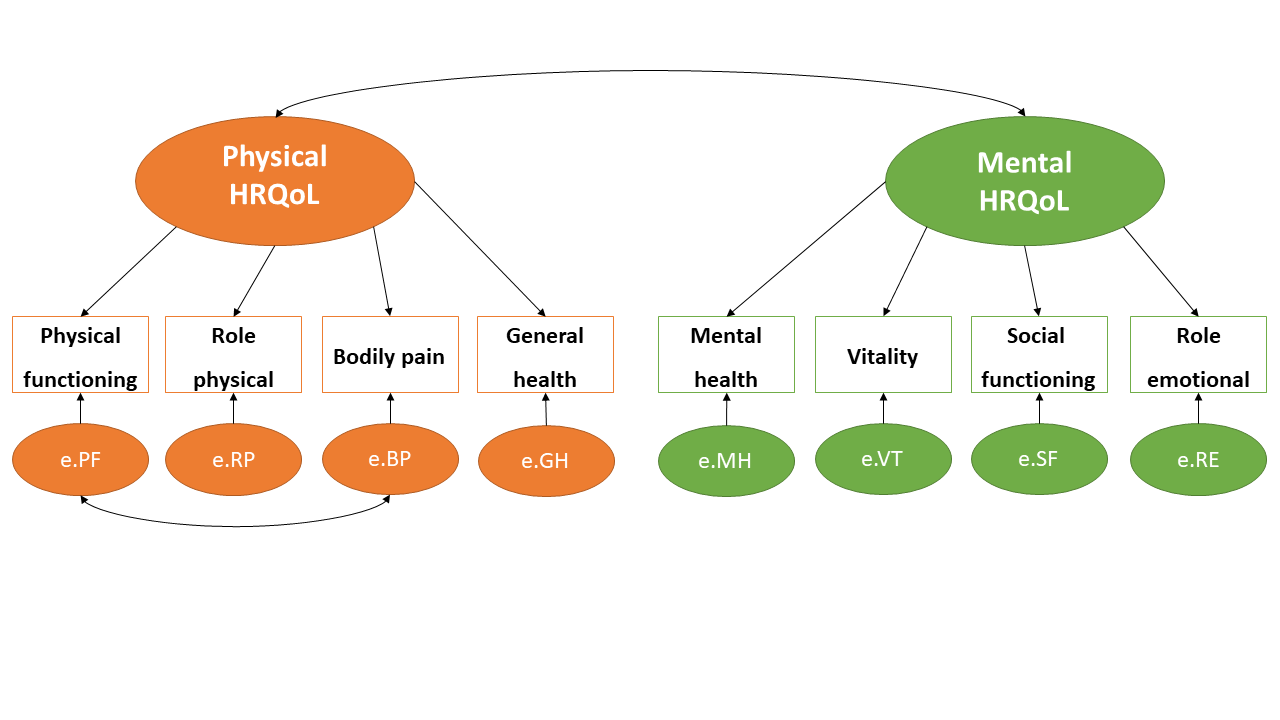Description
This axis focuses on some of the methodological challenges encountered with the analysis and interpretation of self-reported outcomes such as Patient-Reported Outcomes (PRO). Sometimes, patients with similar health outcomes such as health related quality of life (HRQoL) may not understand or interpret questions about their experience in the same way between groups (Differential Item Functioning, DIF) and/or over time (response shift, RS), thus calling into question the hypothesis of measurement invariance. If ignored, DIF and RS, can lead to incorrect interpretations about outcomes of care based on PRO information due to confounding effects. RS is also of interest per se as it could be a result of positive adaptation to health challenges and can also reveal maladaptive disorders that are worth detecting.
- Bulteau S, Sauvaget A, Vanier A, Vanelle J-M, Poulet E, Brunelin J, et al.
Depression Reappraisal and Treatment Effect: Will Response Shift Help Improve the Estimation of Treatment Efficacy in Trials for Mood Disorders?
Front Psychiatry. 2019;10:420.
Read the publication
- Tessier P, Blanchin M, Sébille V.
Does the relationship between health-related quality of life and subjective well-being change over time? An exploratory study among breast cancer patients.
Soc Sci Med 1982. 2017;174:96–103.
Read the publication

We are particularly interested in measurement invariance and its methodological and clinical implications.
To this end, we have developed and validated, using simulation studies, methods derived from latent variable models (e.g. Rasch models, Structural Equation Models) for DIF and RS detection, such as the RespOnse Shift ALgorithm at Item-level ROSALI. All our software routines implementing the methods which are developed are made available to the scientific community via the Internet.
- Guilleux A, Blanchin M, Vanier A, Guillemin F, Falissard B, Schwartz CE, et al. RespOnse Shift ALgorithm in Item response theory (ROSALI) for response shift detection with missing data in longitudinal patient-reported outcome studies. Qual Life Res Int J Qual Life Asp Treat Care Rehabil. 2015 Mar;24(3):553–64.
Read the publication
- Blanchin M, Guilleux A, Hardouin J-B, Sébille V. Comparison of structural equation modelling, item response theory and Rasch measurement theory-based methods for response shift detection at item level: A simulation study. Stat Methods Med Res. 2019 Oct 30;962280219884574.
Read the publication
- Blanchin M, Brisson P. ROSALI. Stata module to detect of response shift at item-level between two times of measurement [Internet]. Statistical Software Components. 2020 [cité 17 juill 2020].
Read the publication
- Hammas K, Sébille V, Brisson P, Hardouin J-B, Blanchin M. How to Investigate the Effects of Groups on Changes in Longitudinal Patient-Reported Outcomes and Response Shift Using Rasch Models. Front Psychol. 2020;11:3704.
Read the publication
Currently, we are continuing our methodological and statistical developments to take into account inter-individual variation in RS which is often assumed to be homogeneous within a sample. This will be performed within a workpackage of a European H2020 project HAP2 to assess change in HRQoL, anxious/depressive symptoms and RS at 1 and 3 months after ICU discharge from the patients’ and relative’s perspectives to better understand the recovery process.

Because RS analysis is particularly relevant after the occurrence of a significant health event, many methods are suited for 2 measurement occasions: before and after such an event (e.g., a diagnosis, a treatment). However, limiting RS detection to only 2 measurement occasions may be too restrictive in many instances. Hence, we wish to gain more insight into the kinetics of RS by extending RS analysis at item level to more than 2 points in time.
We are also interested in using multidisciplinary approaches, including mixed approaches (quantitative and qualitative) to investigate heterogeneity and temporality of invariance.